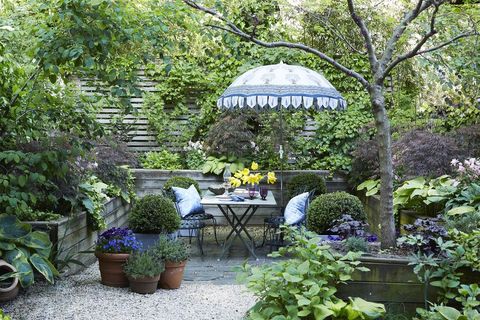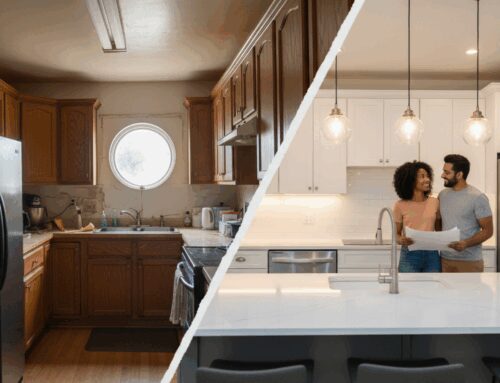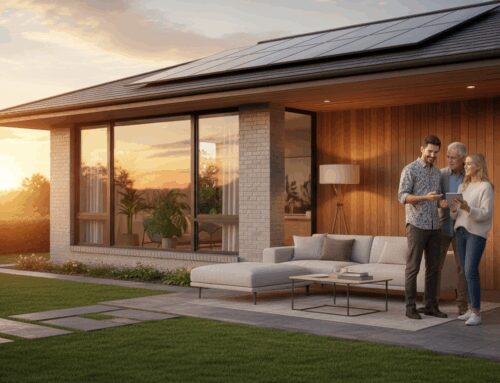Garden design is the art and science of creating outdoor spaces that are beautiful, functional, and sustainable. A well-designed garden can provide a space for relaxation, recreation, and reflection while also improving the health and well-being of its occupants.
The process of creating a garden may be intimidating for anyone, whether they have experience with gardening or not. There’s a lot to think about, from the plants to the furniture.This article will explore some key garden design principles and provide tips for creating a beautiful and functional outdoor space.
Understanding the Elements of Garden Design
The first step in designing a garden is understanding the key elements of a well-designed outdoor space. These include:
Form: The form of a garden refers to its overall shape and structure. This includes the layout of paths, patios, and other hardscaping elements, as well as the placement of plants.
Color: Color is an important element of garden design, as it can be used to create visual interest and focal points. When choosing plants for your garden, consider their color and how they will work together to create a cohesive design.
Texture: Texture refers to the surface quality of plants and other materials in the garden. A mix of textures can add visual interest and depth to a garden.
Scale: Scale refers to the size of plants and other elements in the garden and how they relate to one another. Choosing plants and hardscaping elements that are appropriately sized for the space is important.
Light: Light is a crucial element of garden design, as it affects the growth and health of plants. When designing your garden, consider the amount of sunlight different areas receive, and choose plants suited to those conditions.
Designing for Function
When designing a garden, it is important to consider not only its aesthetic qualities but also its function. A well-designed garden should provide space for a variety of activities, such as dining, entertainment, and relaxation.
To create a functional garden, consider the needs of the people who will be using the space. Do you need a play area for children? A space for outdoor cooking and dining? A quiet retreat for reading and reflection? By understanding the needs of the people who will be using the space, you can design a beautiful and functional garden.
Creating a Sustainable Garden
In addition to being beautiful and functional, a well-designed garden should also be sustainable. This means designing a garden that is environmentally friendly and requires minimal maintenance and resources.
Use local, climate- and soil-appropriate plant species to cultivate a garden that will last. Native plants are often more resilient and require less water and maintenance than exotic species.
You can also incorporate sustainable design principles into your garden using recycled materials, such as reclaimed wood and stone, and installing rainwater harvesting systems and compost bins.
Designing a Garden for All Seasons
A well-designed garden should be beautiful and functional year-round. By choosing plants that bloom at different times of the year and incorporating hardscaping elements that can be enjoyed in all seasons, you can create an always-changing and evolving garden.
- To create a garden for all seasons, consider incorporating elements such as:
- Evergreen plants provide year-round color and texture.
- Create a garden that will stand the test of time by using only local, climate- and soil-appropriate plant species.
- Hardscaping elements such as pergolas, arbors, and trellises provide structure and interest year-round.
- Outdoor lighting can be enjoyed in all seasons, such as string lights and lanterns.
Designing for Different Garden Styles
There are many different styles of gardens to choose from, each with its own unique characteristics and design principles. Some popular garden styles include:
- English Garden: Known for its lush, romantic style, an English garden typically features a mix of formal and informal elements, including manicured hedges, winding paths, and colorful flower beds.
- Cottage Garden: A cottage garden is characterized by its informal, romantic style, emphasizing a mix of colorful flowers and foliage. Cottage gardens often feature rustic hardscaping elements such as stone walls and picket fences.
- Zen Garden: A Zen garden is a minimalist, peaceful garden that emphasizes simplicity and tranquility. Zen gardens typically feature a mix of gravel, sand, and rocks, with carefully placed plants and sculptures.
- Mediterranean Garden: Warm, sunny weather, drought-resistant plants, and masonry features like stone walls and terracotta pots are the hallmarks of a Mediterranean garden. Mediterranean gardens often feature bold, bright colors and fragrant herbs.
Designing for Different Garden Spaces
Whether you have a small balcony or a sprawling backyard, there are many ways to design a beautiful and functional garden in any space. Here are some tips for designing gardens in different spaces:
- Small Garden Spaces: When designing a small garden space, choosing plants and hardscaping elements that are appropriately scaled for the space is important. Consider using vertical gardening techniques, such as trellises and hanging baskets, to maximize space.
- Rooftop Gardens: Rooftop gardens can be challenging to design, as they often have limited space, weight restrictions, and exposure to wind and sun. Consider using lightweight materials such as modular planters and choosing plants that can withstand extreme weather conditions.
- Courtyard Gardens: Courtyard gardens can provide a private, intimate space for relaxation and reflection. When designing a courtyard garden, consider using water features, such as fountains and ponds, to create a calming atmosphere.
- Shade Gardens: If you have a shady space, choose plants that are adapted to low-light conditions, such as ferns and hostas. Consider incorporating hardscaping elements such as benches and sculptures to add interest and texture.
Conclusion
Designing a garden can be a rewarding and fulfilling experience, allowing you to create a beautiful and functional outdoor space that reflects your personal style and meets your needs. By understanding the key principles of garden design, such as form, color, texture, scale, and light, and considering factors such as function, sustainability, and seasonality, you can create a beautiful and functional garden year-round. Whether you prefer an English garden or a Zen garden, a cottage garden or a Mediterranean garden, there is a garden style and design that is perfect for you.
FAQs
Q: How do I determine the best location for my garden?
A: To determine the best location for your garden, consider factors such as sunlight exposure, soil quality, and proximity to water sources. Choose a location with at least 6 hours of direct sunlight daily and well-draining soil.
Q: What are some low-maintenance plants for a garden design?
A: Some low-maintenance plants for a garden design include succulents, native plants, and ornamental grasses. These plants require minimal watering and pruning and are well-adapted to local climate conditions.
Q: How can I make my garden design more eco-friendly?
A: You can reduce the environmental impact of your garden by adopting sustainable practises like composting, utilising rainwater for irrigation, employing native plants, and using organic fertilisers and insect control measures.
Q: How can I create a garden design that attracts pollinators?
A: To create a garden design that attracts pollinators such as bees and butterflies, plant a variety of flowers in different colors and shapes, provide nesting habitats such as bee houses, and avoid using pesticides that can harm pollinators.
Q: What are some tips for maintaining a garden design throughout the year?
A: Some tips for maintaining a garden design throughout the year include regularly watering and fertilizing your plants, pruning as needed, controlling weeds, and mulching to retain moisture and suppress weeds. Additionally, consider planting various plants with different bloom times to ensure your garden looks beautiful year-round.






Leave A Comment